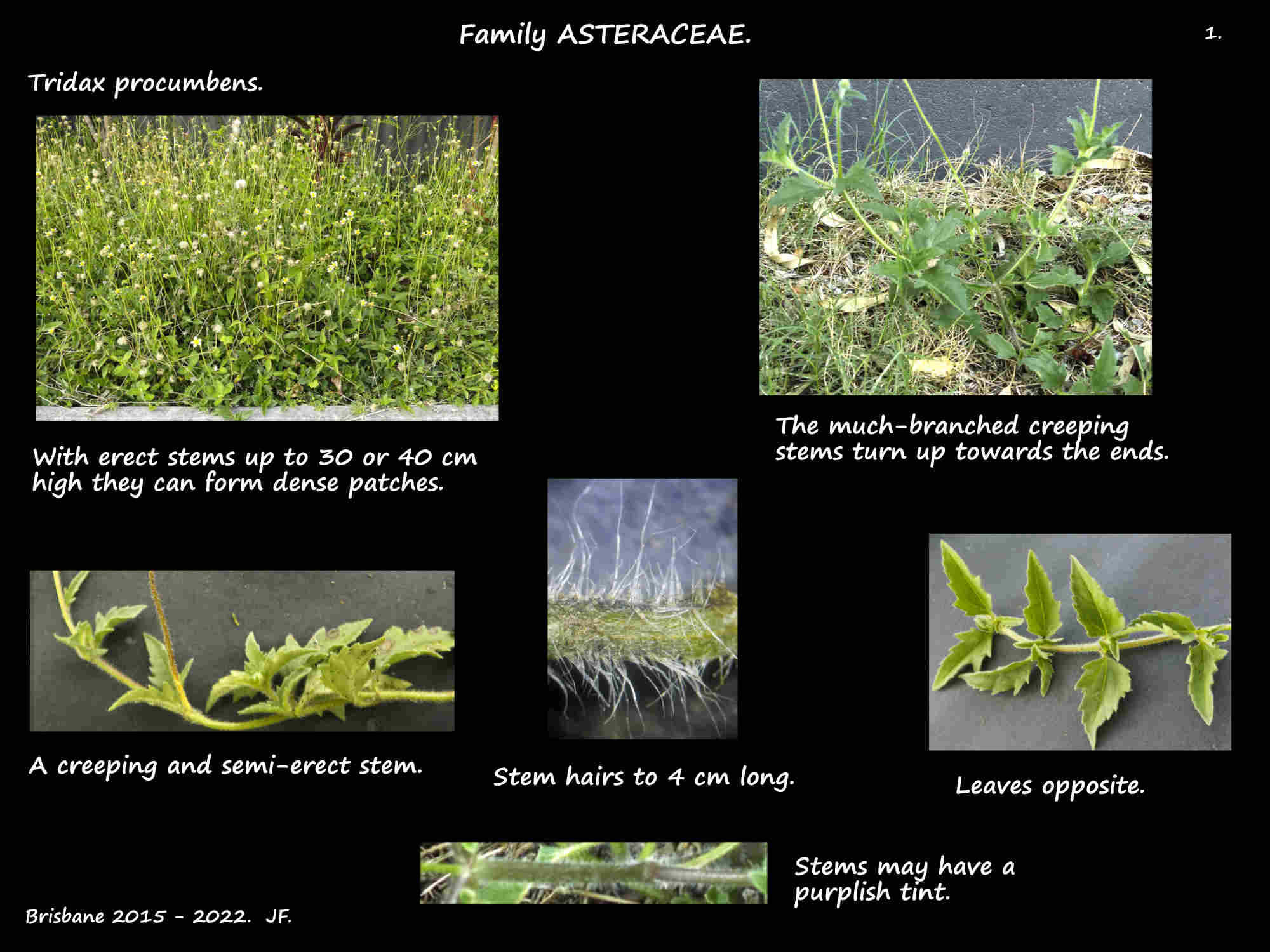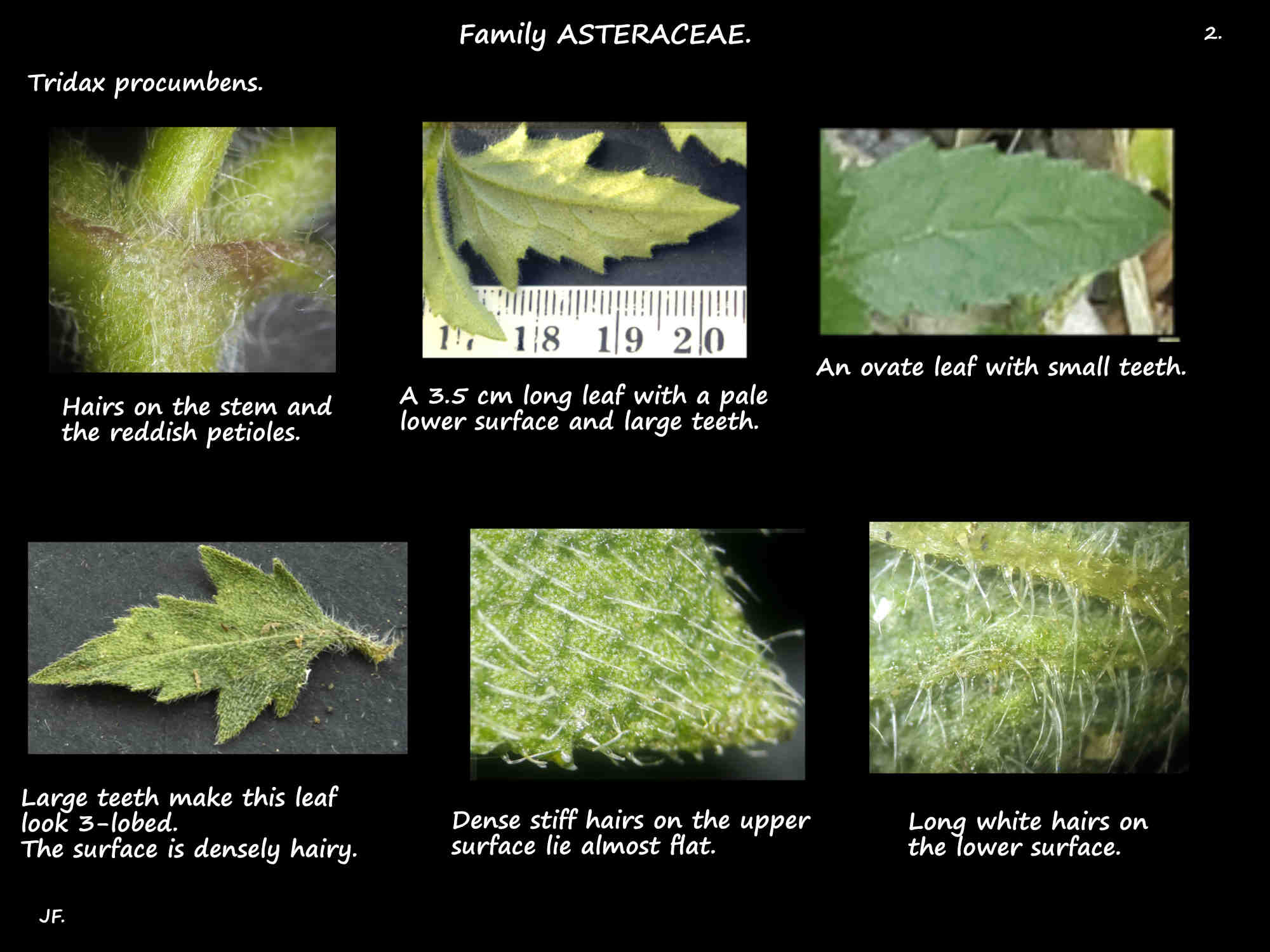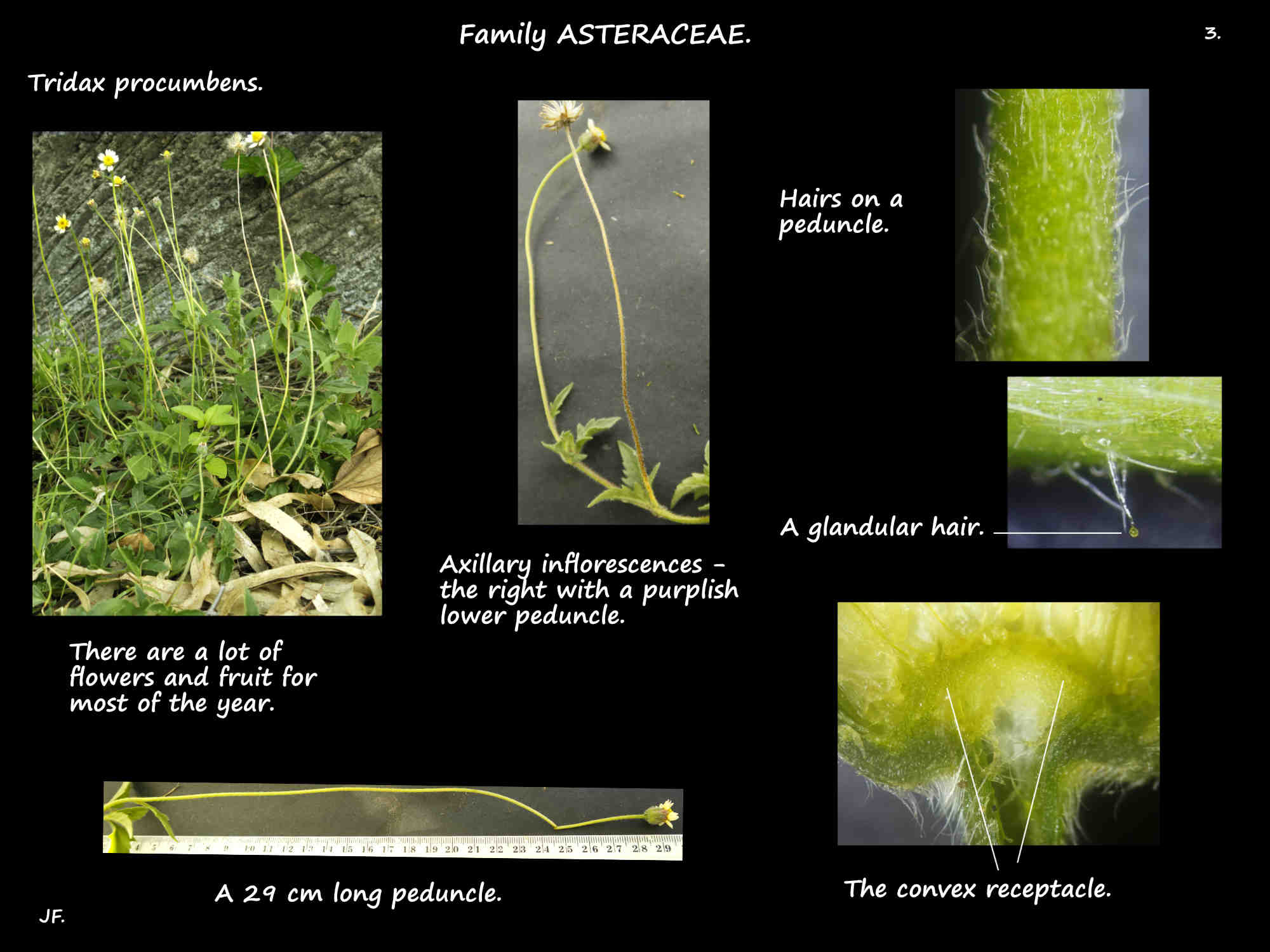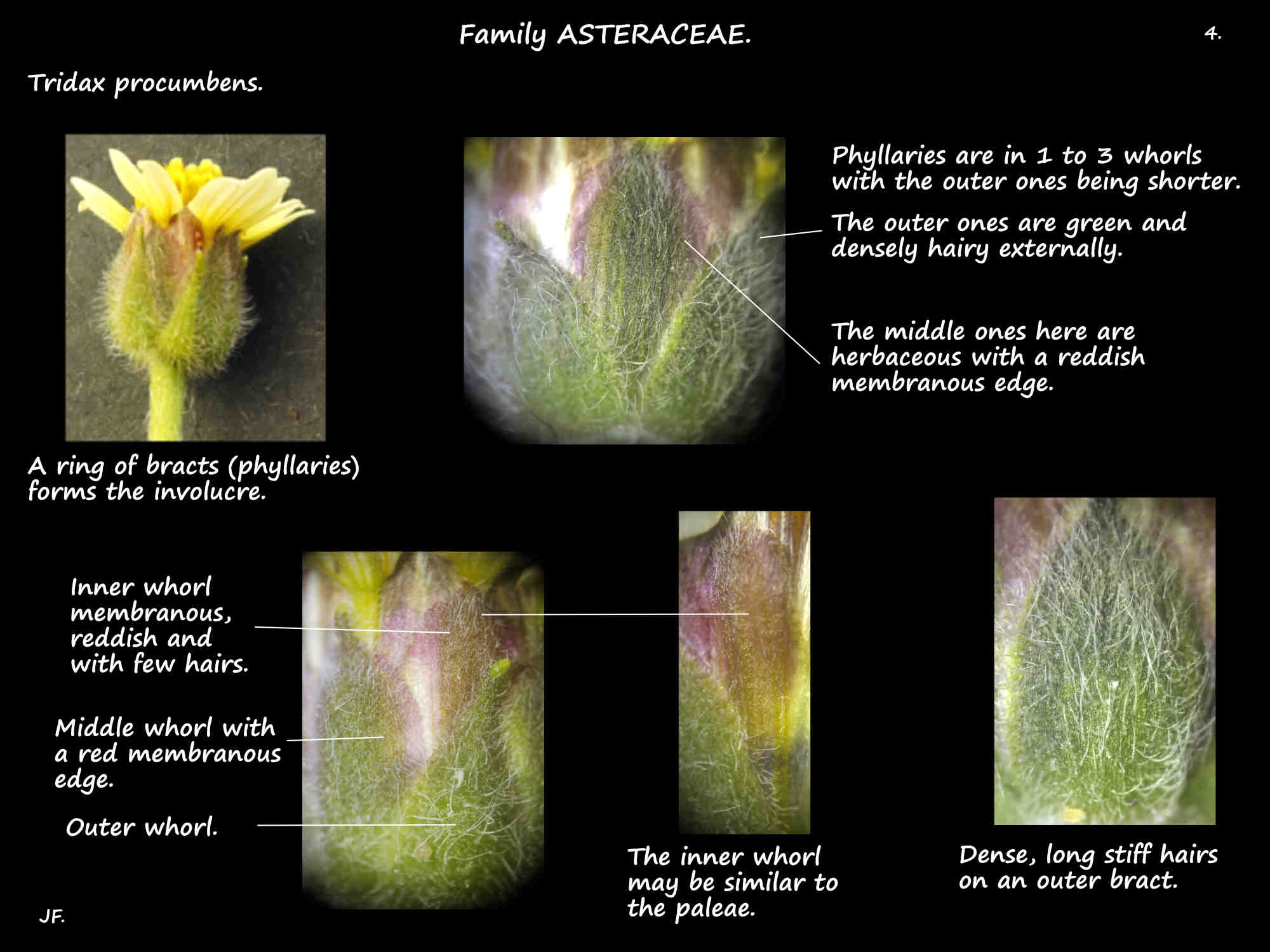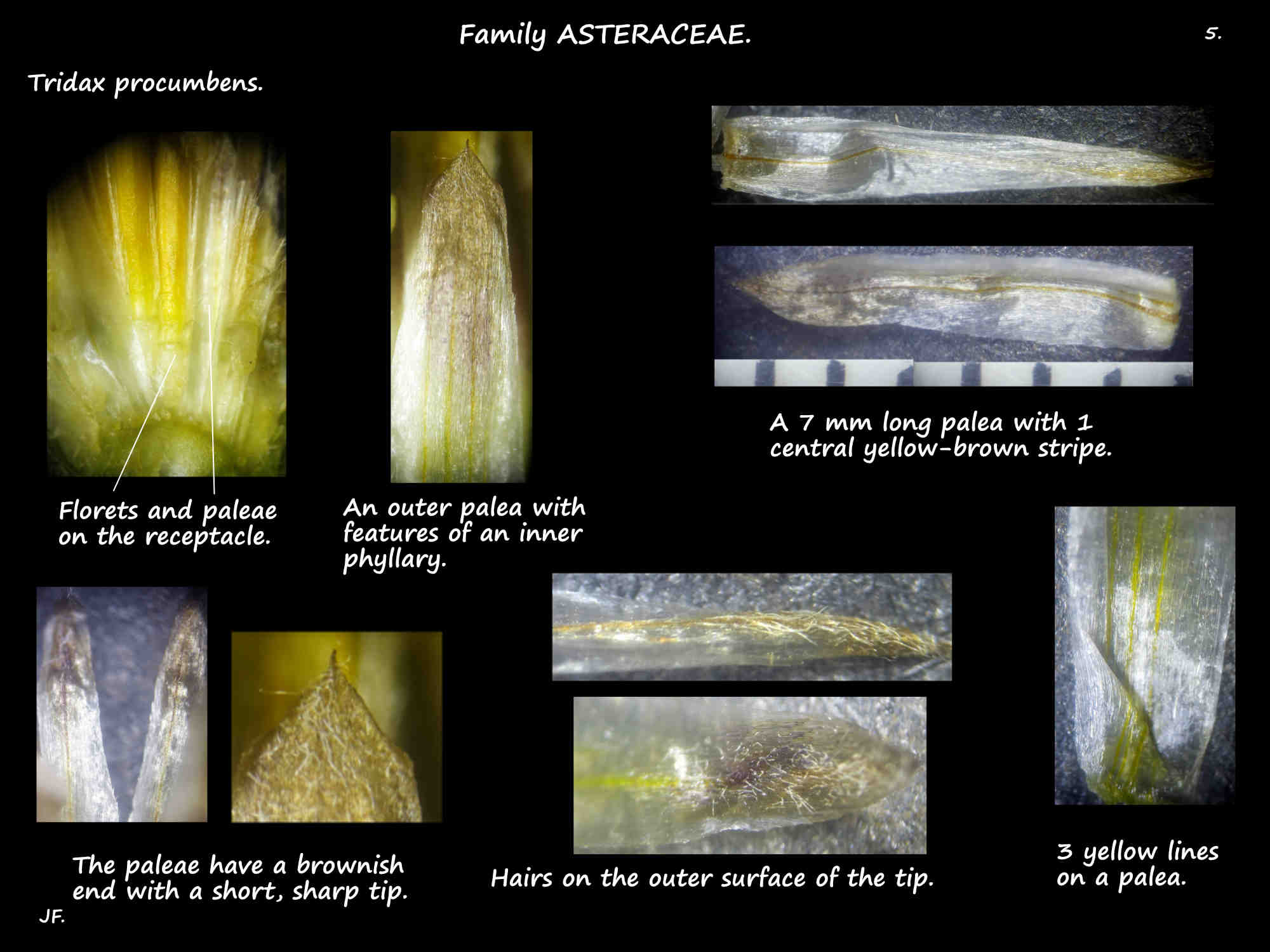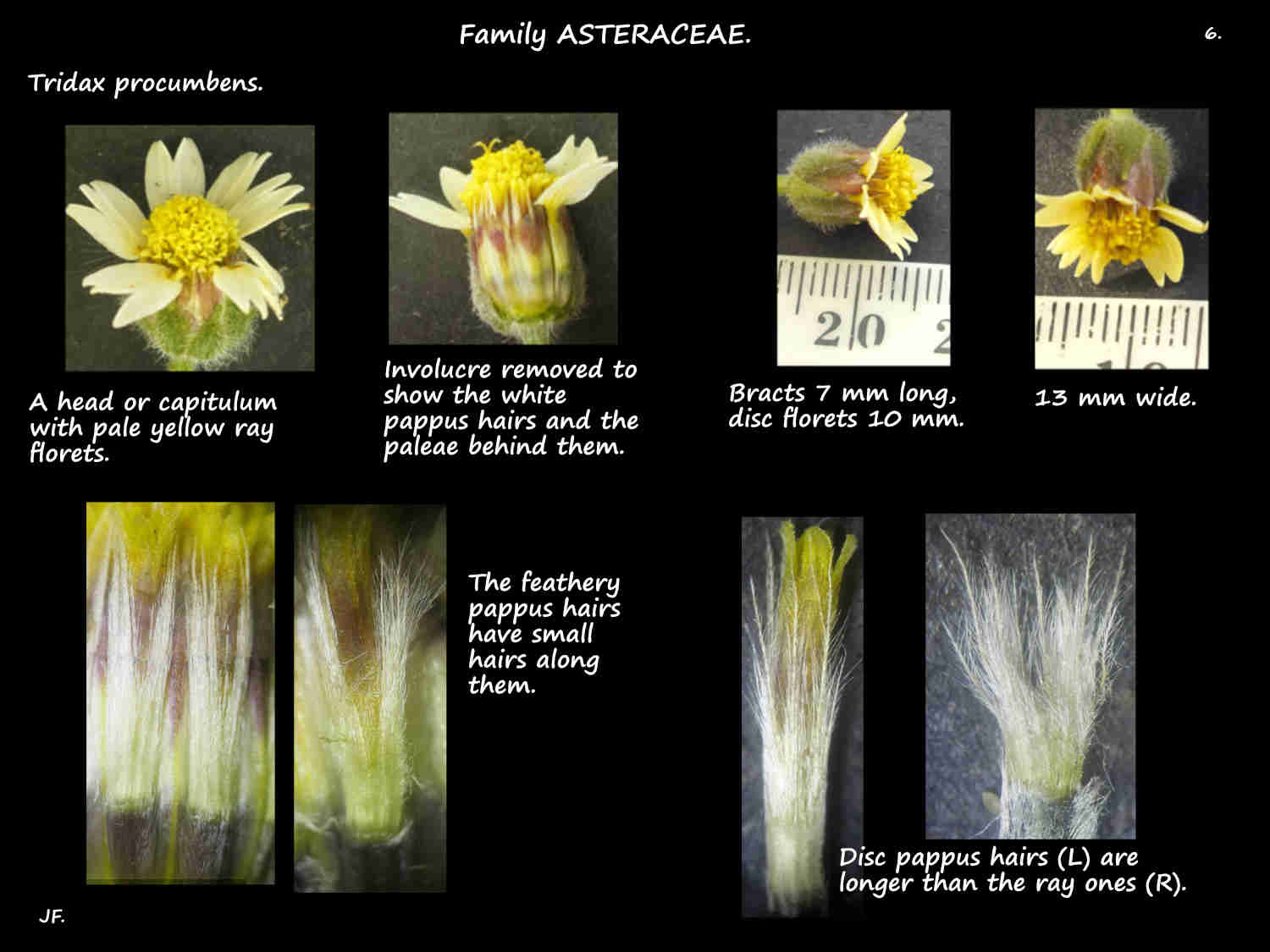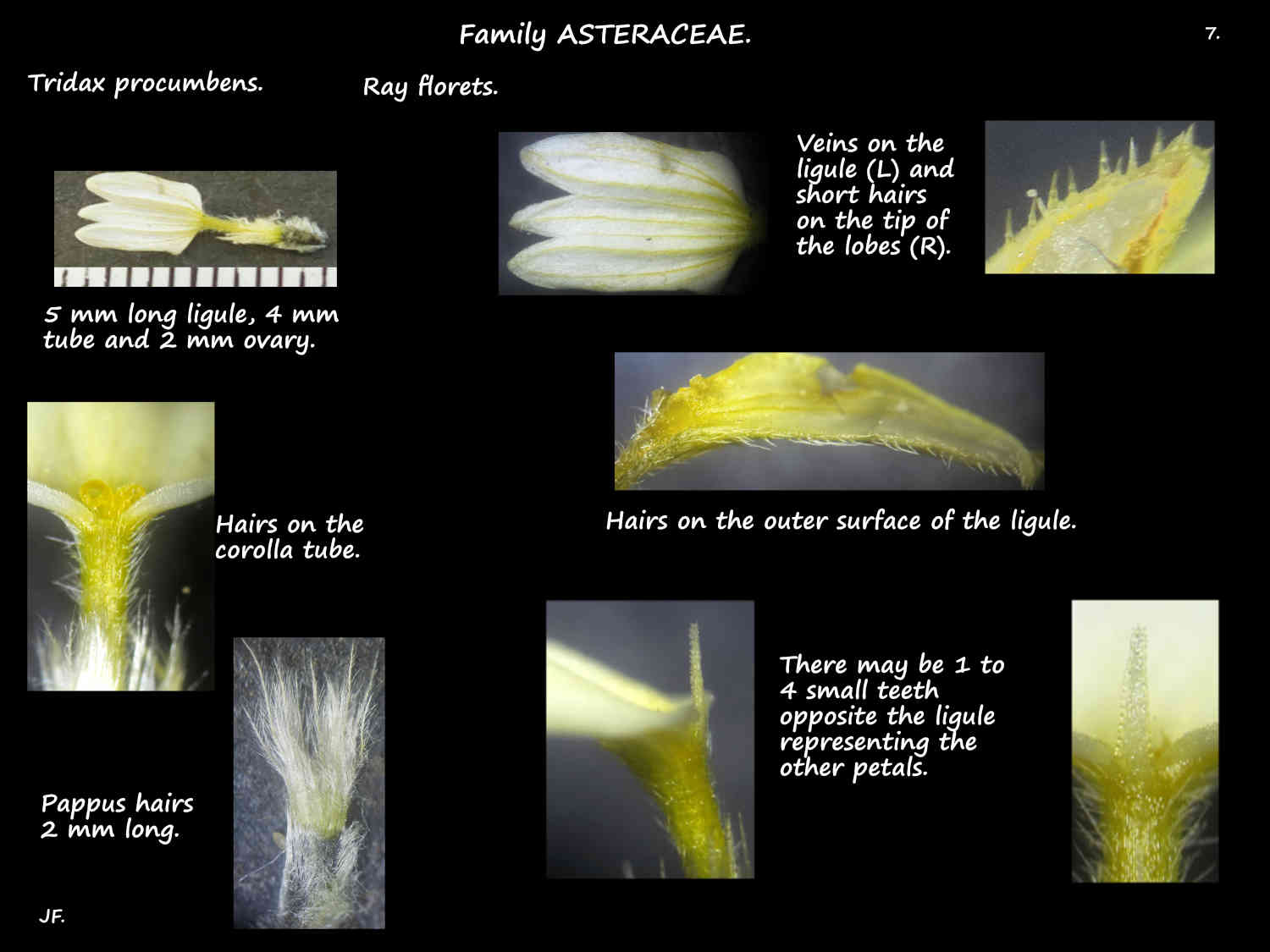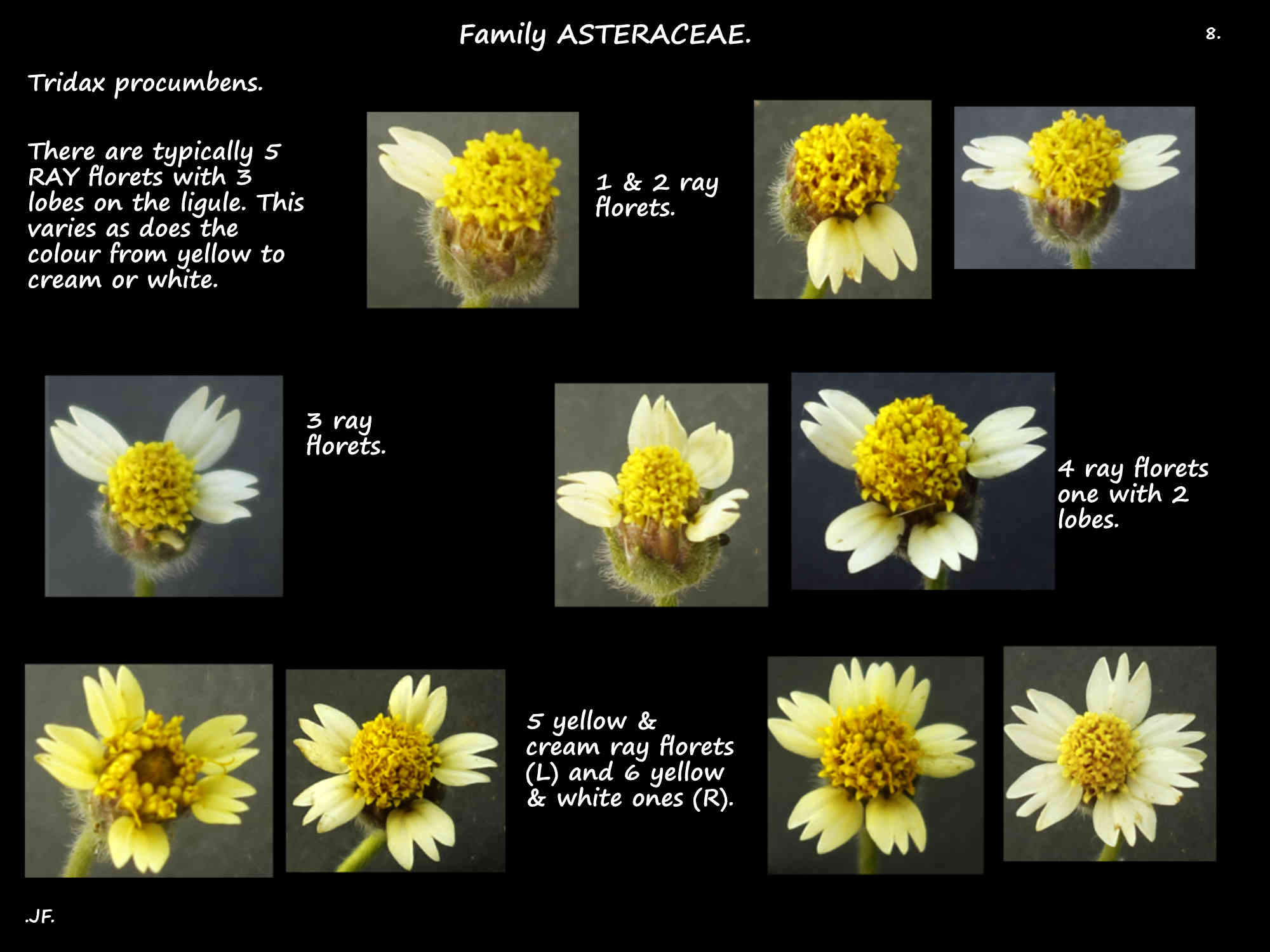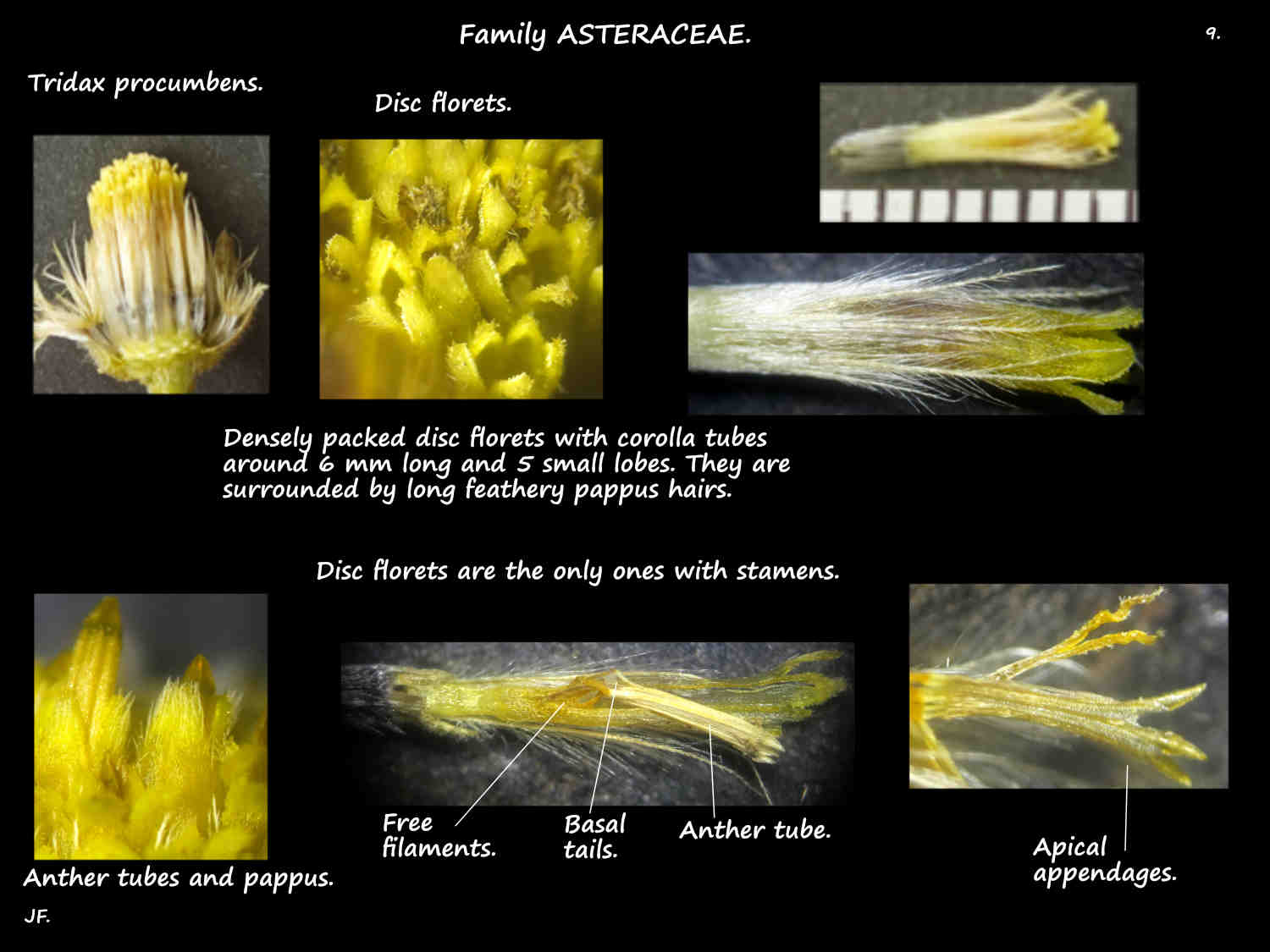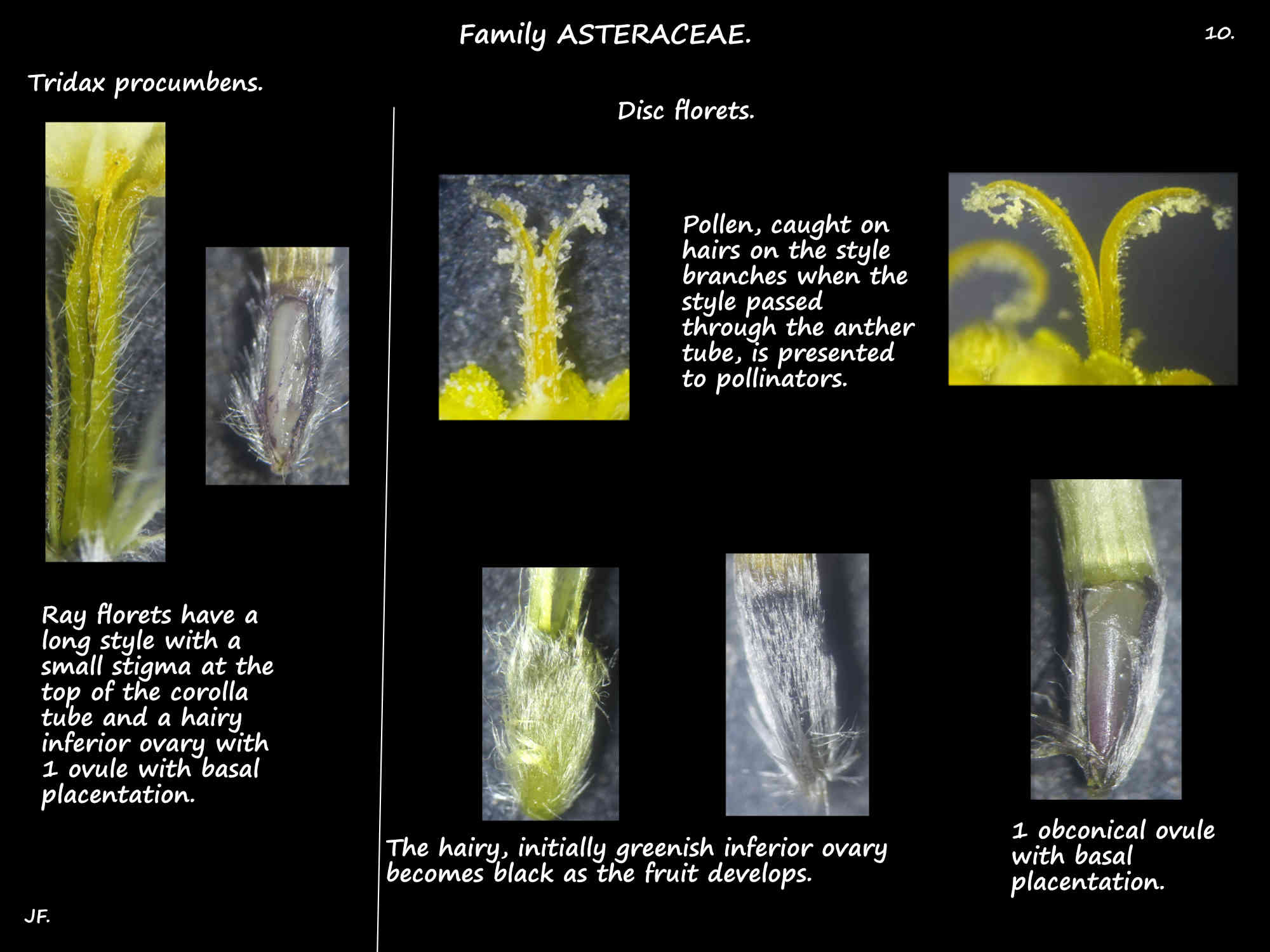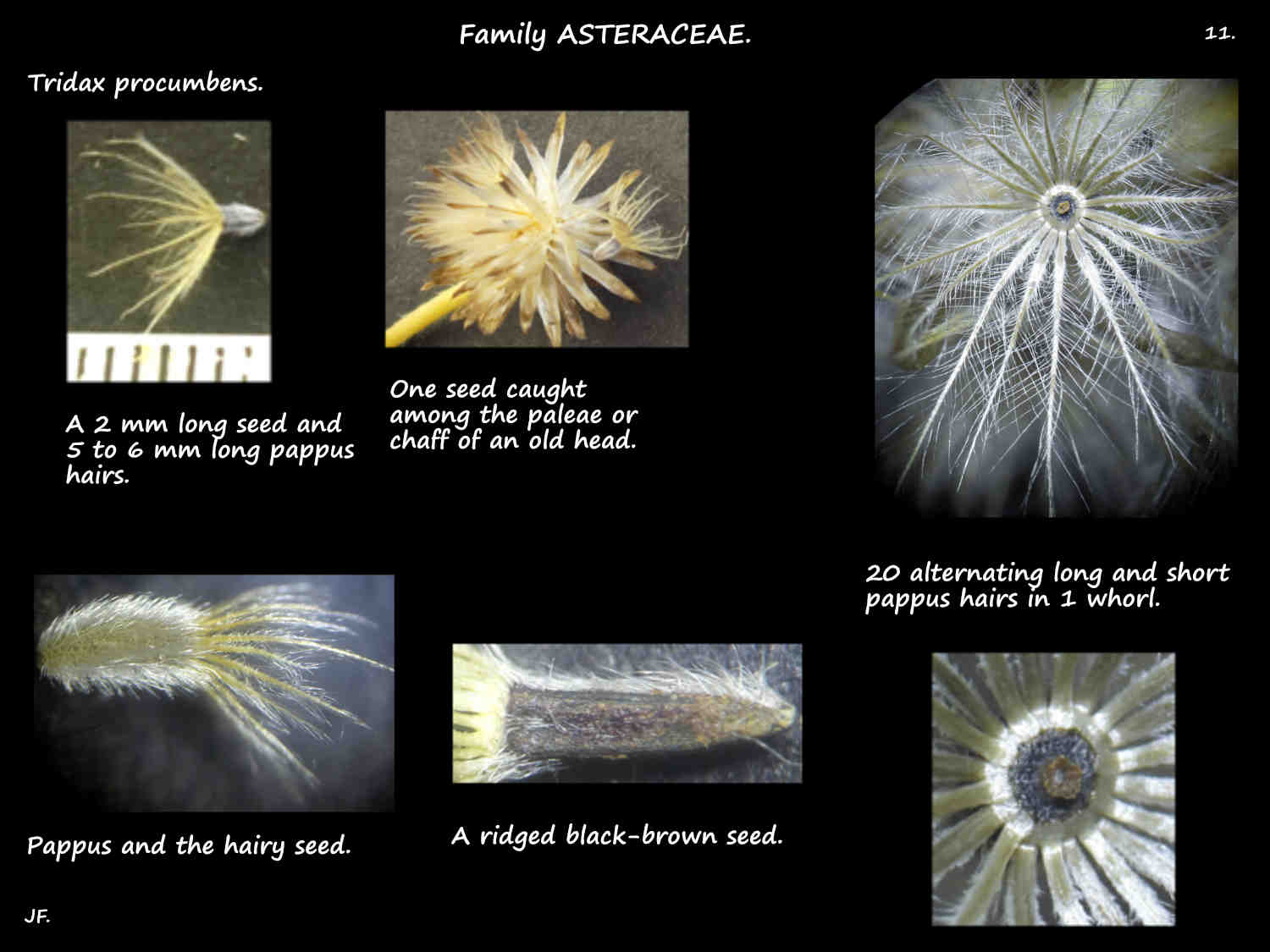Tridax procumbens.
In Family Asteraceae > Tribe Heliantheae the Tridax genus has 30 species.
Tridax procumbens is known as Coat buttons or Tridax daisy.
It is widely naturalised in Queensland where it is a weed.
Features characterising this species include their semi-prostrate habit, opposite leaves, 3 hairy
whorls in the involucre and pale yellow ray florets with 3-lobed ligules.
They are much-branched herbs with creeping stems up to 75 cm long that root at the nodes.
Erect leafy branches are up to 40 cm long.
The cylindrical green stems may have purplish areas.
They have a few to many pale stiff hairs up to 4 mm long.
The simple opposite leaves are on hairy green or reddish petioles up to 2 cm long.
Leaves are 3 to 5 (2 to 7) cm long and 1 to 4 cm wide.
The blades can be lanceolate to ovate with a wedge-shaped base and a pointed tip.
The margin may be almost smooth but is usually irregularly toothed or shallowly 3-lobed.
The upper surface is green, the lower surface is paler and the edges may be red.
Both surfaces are covered in coarse hairs that make the leaf feel rough.
Terminal inflorescences are a solitary radiate head or capilitum 1 cm long and up to 2 cm wide.
They are on erect peduncles 25 to 40 cm long.
The whole peduncle can be green and smooth or hairy and the base is often red.
The slightly convex receptacle has membranous linear scales (paleae) up to 8 mm long with a pointed tip.
Colourless apart from reflected white light they have a darker tip with hairs on the outer surface.
There is an involucre of 2 or 3 whorls of bracts or phyllaries.
The outer phyllaries are 5 to 6 mm long, green, herbaceous and covered in long white hairs.
The inner ones are 7 to 8 mm long, membranous and purplish and with less or no hairs.
When there are 3 whorls the middle bracts can be a transition between the other two with green phyllaries
having membranous purple edges and a moderate amount of hairs.
The inner whorl may be a transition between the inner bracts and the paleae on the receptacle.
The paleae on the receptacle are up to 8 mm long and have 1 to 3 yellowish or brown lines down them.
The 5 (1 to 6) peripheral ray florets attach directly to the receptacle.
Their corolla tube is 3.5 mm long with a 4 to 5 mm long ligule.
The pale yellow, cream or white ligules typically have 3 deep lobes with hairs externally.
There may be tiny teeth on the opposite side of the corolla tube.
The silky hairs in the pappus at the top of the ovary have short barbs making them feathery or plumose.
Ray florets are functionally female with an ovary, style and stigmas but no stamens.
Most of the head is composed of dense bisexual disc florets directly inserted onto the receptacle.
Each floret has a palea associated with it and their pappus hairs are similar to those on the ray florets but longer.
Their yellow or brownish-yellow corolla tube is around 6 mm long with 5 triangular lobes 0.5 mm long.
There are short hairs on the lobe tips.
The 5 stamen filaments are free and the basifixed anthers are fused into a tube.
The anthers have an apical appendage and 2 basal tails.
Pollen is released through long slits into the tube before the style grows through it.
The inferior ovary, of 2 fused carpels has 1 locule with 1 basally attached ovule.
The obovate ovary is 2 mm long and densely covered in long pale hairs.
There is a single apical style that divides into 2 branches holding the linear stigmas.
The branches have hairs on the outer surface that collect pollen as the style grows through the anther tube.
The fruit are a dry dark brown or black indehiscent cypsela around 2 mm long.
By old and common usage they are frequently called achenes but these are from a superior ovary.
Cypselae are covered in long pale hairs and the pappus remains attached at the top.
The pappus has around 20 alternating long and short hairs 4 to 10 mm long in 1 whorl.
One plant can produce over 1000 seeds.
J.F.
